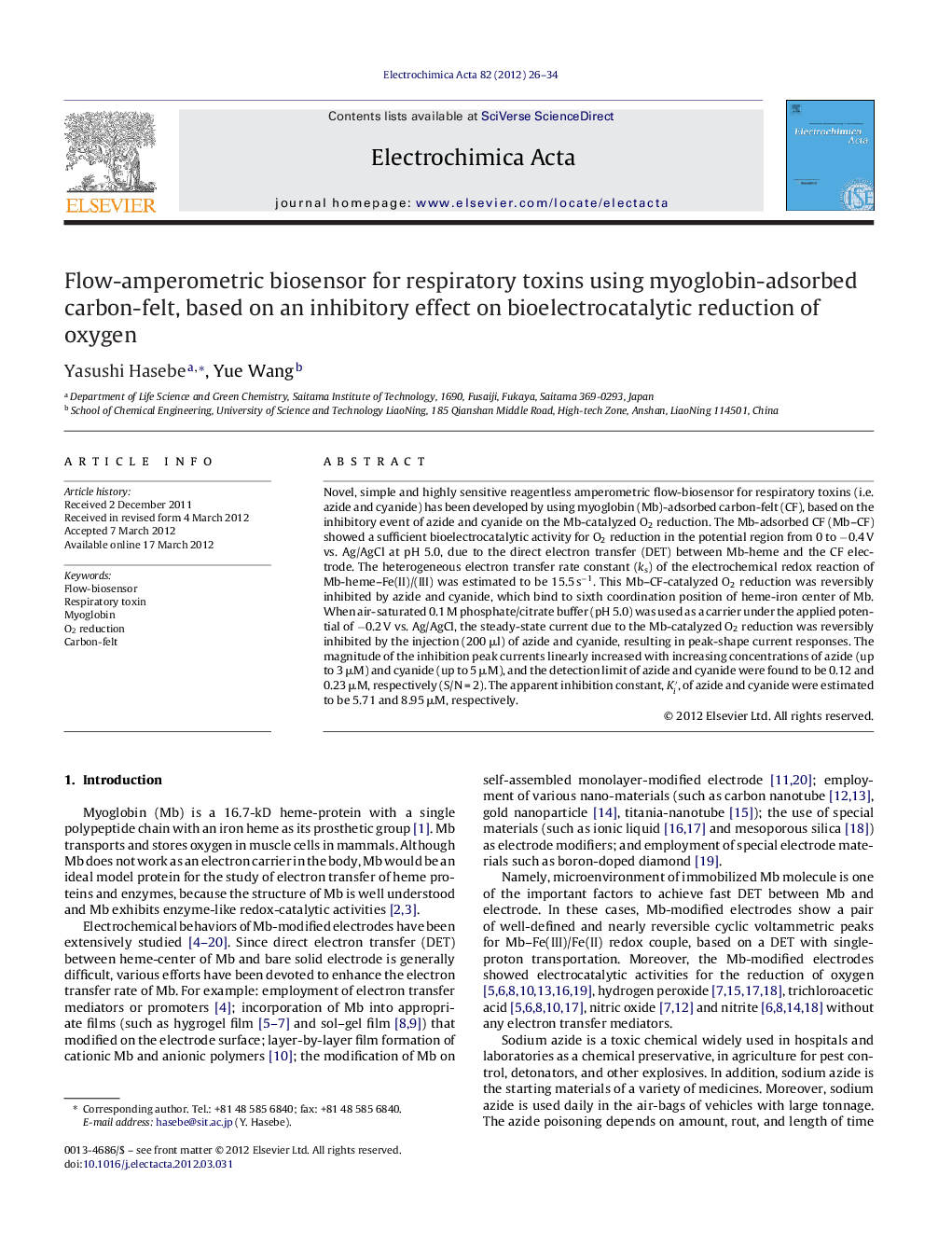| Article ID | Journal | Published Year | Pages | File Type |
|---|---|---|---|---|
| 6618237 | Electrochimica Acta | 2012 | 9 Pages |
Abstract
Novel, simple and highly sensitive reagentless amperometric flow-biosensor for respiratory toxins (i.e. azide and cyanide) has been developed by using myoglobin (Mb)-adsorbed carbon-felt (CF), based on the inhibitory event of azide and cyanide on the Mb-catalyzed O2 reduction. The Mb-adsorbed CF (Mb-CF) showed a sufficient bioelectrocatalytic activity for O2 reduction in the potential region from 0 to â0.4 V vs. Ag/AgCl at pH 5.0, due to the direct electron transfer (DET) between Mb-heme and the CF electrode. The heterogeneous electron transfer rate constant (ks) of the electrochemical redox reaction of Mb-heme-Fe(II)/(III) was estimated to be 15.5 sâ1. This Mb-CF-catalyzed O2 reduction was reversibly inhibited by azide and cyanide, which bind to sixth coordination position of heme-iron center of Mb. When air-saturated 0.1 M phosphate/citrate buffer (pH 5.0) was used as a carrier under the applied potential of â0.2 V vs. Ag/AgCl, the steady-state current due to the Mb-catalyzed O2 reduction was reversibly inhibited by the injection (200 μl) of azide and cyanide, resulting in peak-shape current responses. The magnitude of the inhibition peak currents linearly increased with increasing concentrations of azide (up to 3 μM) and cyanide (up to 5 μM), and the detection limit of azide and cyanide were found to be 0.12 and 0.23 μM, respectively (S/N = 2). The apparent inhibition constant, Kâ²i, of azide and cyanide were estimated to be 5.71 and 8.95 μM, respectively.
Keywords
Related Topics
Physical Sciences and Engineering
Chemical Engineering
Chemical Engineering (General)
Authors
Yasushi Hasebe, Yue Wang,
